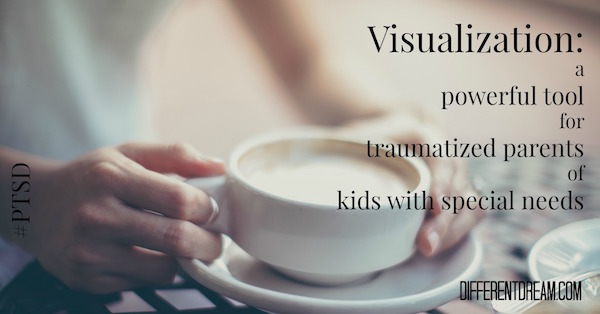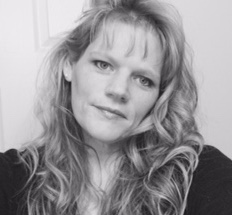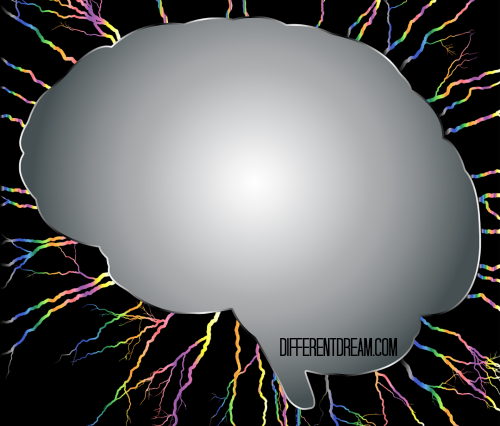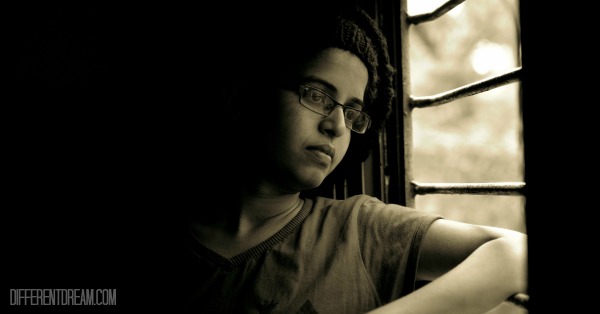PTSD in Parents of Kids with Special Needs: Visualization as a Coping Tool

Thank you for stopping by Different Dream for the latest post in our series about PTSD in parents of kids with special needs. Today’s post comes from Kim VanderSchelde. She’s mom to 3 great kids. Her daughter was diagnosed with pilocytic astocytoma in her brain stem at 17 months of age. Kim’s here to share a technique she uses to cope since her family doctor diagnosed her with PTSD.
PTSD in Parents of Kids with Special Needs: Visualization as a Coping Tool
When my family doctor suggested that I may be suffering from PTSD I thought that perhaps she had me confused with another patient that was in the military. I certainly had not been to war! She explained what PTSD was. Like many disorders and diseases that can’t be seen under a microscope, people sometimes have a difficult time accepting it a real. In my hours of reading up on it, I found articles by doctors who believe that the parents of children diagnosed with cancer can suffer from PTSD. I had trouble finding the same enthusiasm in Canada where I live. When I brought it up to a member of our daughter’s psychological team, I was told that Canadian research showed that parents have some of the symptoms of the disorder, but they were not severe enough to be classified as PTSD. My case was apparently was different because our daughter’s cancer diagnosis came while I was still grieving for my first husband who passed away suddenly 10 years earlier. After his death, I convinced myself that we would get through whatever life threw at us as long as we stayed positive. When my daughter was diagnosed with cancer, I had to stop focusing on everything all at once. We all know that there is no corner of our lives that our children’s illnesses have not affected. Finances, marriage, other children. The disappearance of friends and family. The more I thought about special needs parenting and PTSD, I realized that it truly is a disorder that involves war. Life is a fight each and everyday, regardless of the type of special needs our children have. They, too, are fighting a war against the monster within their bodies and we as parents are fighting all the symptoms of our PTSD. I learned to taking a deep breath before walking into the place where our life changed. Knowing that if I had a choice I would avoid going there again. The bad dreams. Closing my eyes only to be thrust back to that moment we first heard the word cancer and my child’s name in the same sentence.Visualization: Four Steps Parents of Kids with Special Needs Can Use to Cope
I also I began using visualization, or imagery, a technique I had learned years before while trying to become pregnant. The best way I can find to describe it is “visualizing yourself somewhere that brings you peace.” You can use the same technique to cope with PTSD by following these steps.- Find a place. Finding a quiet place to spend 20 minutes visualizing undisturbed is vital.
- Use music. If music is soothing to you, that can help while you are visualizing.
- Close your eyes and think of one place. Think of the one place where you are most relaxed. Or imagine yourself surrounded by your favorite flowers. Pretend you are lying on a blanket, picturing every detail of the blanket, as you stare up at the blue sky with white pillow-like clouds. So clear are those clouds that you can make out designs in them. You can hear, crickets or maybe bees flying from one flower to the next. Take a deep breath to smell the flowers you love.
- Take your time. Remember that visualizing is much like redecorating a room to your liking. So take some time to make it what relaxes you.
Tomorrow is going to come whether I am here or not. I am going to make my today play a part in the happiness of my family’s tomorrows.
~Kim VanderScheide
What’s Your Take on Visualization?
Have you used visualization to cope with the effects of trauma or PTSD? Was it helpful? How do you use it? What other coping skills do you recommend? Leave a comment.Part 1: Special Needs Parents and PTSD Results
Part 2: Special Needs Parents and PTSD–What About You Mom?
Part 4: 8 Truths about PTSD in Parents of Kids with Special Needs
Part 5: PTSD in Parents–Moving from Negative to Positive
Part 6: PTSD and Special Needs Parents: 5 Ways to Prepare for Healing
Part 7: PTSD in Parents of Kids with Special Needs: Visualization as a Coping Tool
Part 8: Newborns Feel Pain: The Headline that Almost Triggered My PTSD
Part 9: Why Special Needs Parents with PTSD Should Watch Inside Out
Part 10: Why Kids with PTSD Need Mentally Healthy Parents
Part 11: PTSD and Special Needs Parents: Calling it Like It Is
Part 12: The Unseen Battle with PTSD
Part 13: Medically-Induced PTSD
Do you like what you see at DifferentDream.com? You can receive more great content by subscribing to the quarterly Different Dream newsletter and signing up for the daily RSS feed delivered to your email inbox. You can sign up for the first in the pop up box and the second at the bottom of this page.

By Kim VanderSchelde
Kim VanderSchelde and her amazing husband are raising 3 strong children in Canada. Her daughter Olivia, age 10, was diagnosed with pilocytic astocytoma at 17 months and her prognosis was grim. Kim writes about her family’s journey at ourmilliondollarbaby.wordpress.com.
5 Comments
Submit a Comment
Subscribe for Updates from Jolene
Related Posts
Inside Out Special Needs Parenting, Part 2: Brain Basics
This post in the Inside Out Special Needs Parenting series takes a look at brain basics to explain why kids can push our buttons.
Special Needs Parenting Stress and Medication
Sometimes will power alone can’t cure special needs parenting stress. Guest blogger Sheri Dacon explains when she realized medication had to be part of her healing.
Myths about PTSD in Children, Part 1
5 myths about PTSD in children is explained in the third episode of Jolene Philo’s video series for Rising Above Ministries and Jolene Philo.






My daughter was also diagnosed with a pilocytic astrocytoma at age 2. By the time she was correctly diagnosed she was just hours away from dying. I know exactly how you felt when you heard your daughter’s name and cancer in the same sentence. Thanks for sharing your story at Faith, Hope and Love! I will be visiting your blog!
Kristi,
That is a wonderful example of visualization. Thanks for giving readers another idea of how to approach it.
Jolene
Ann, I’m so glad this was helpful to you. Stop by each week for more information about PTSD in parents of kids with special needs and how to deal with it.
Praying for you,
Jolene
I am in the UK and bringing up a child with physical challenges. This isn’t recognised in the UK as parents just gave to cope whatever. I found this article really helpful and it may help with ad dreams I get at night which I know are a reaction to the stress. Thank you I will try this now.
This is so important and helpful. Often, I find myself sitting outside on my back stoop once my son is asleep. Something about imagining the world and all of the different people in it is calming and brings me to the place that feels like it’s where I need to be.